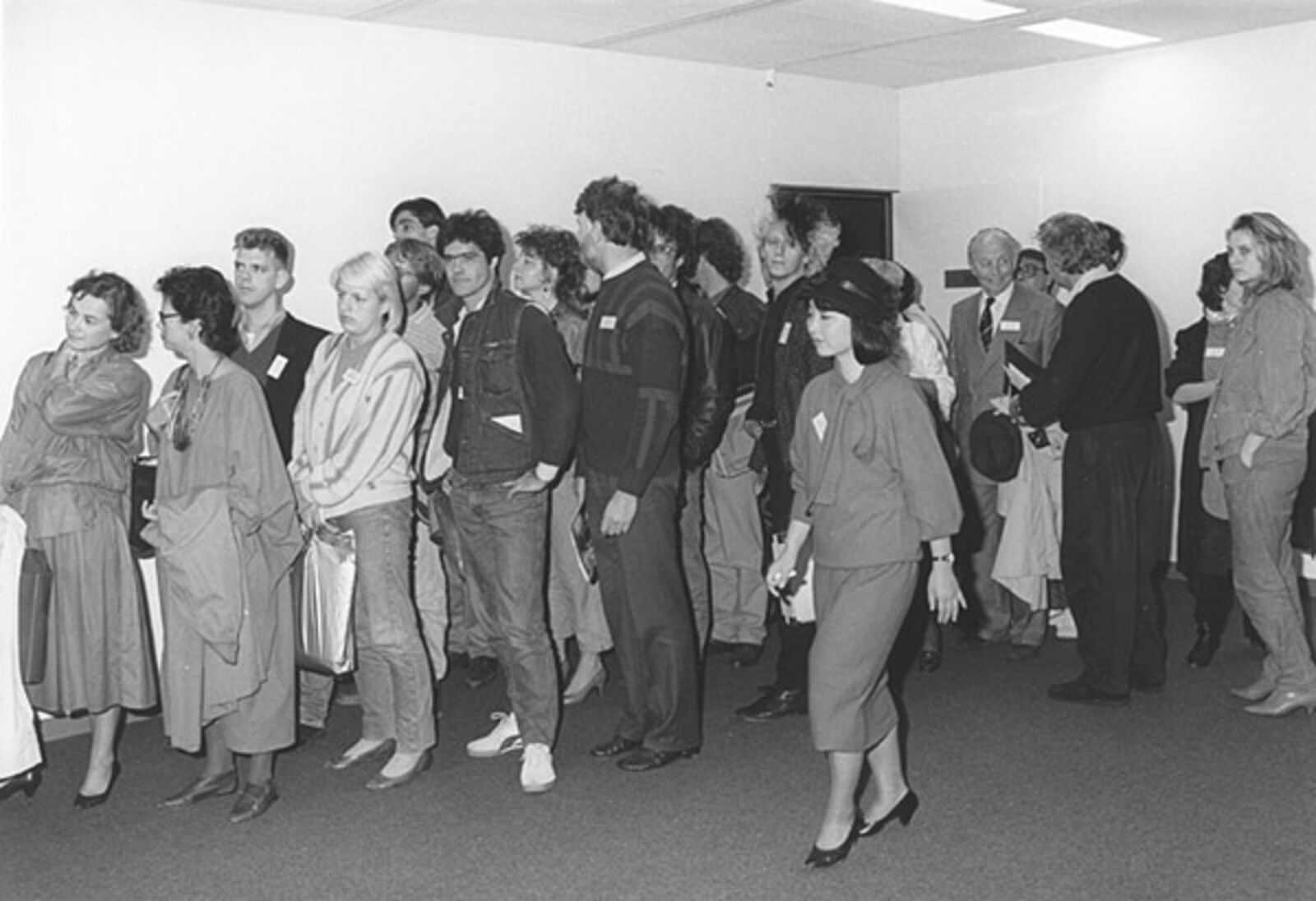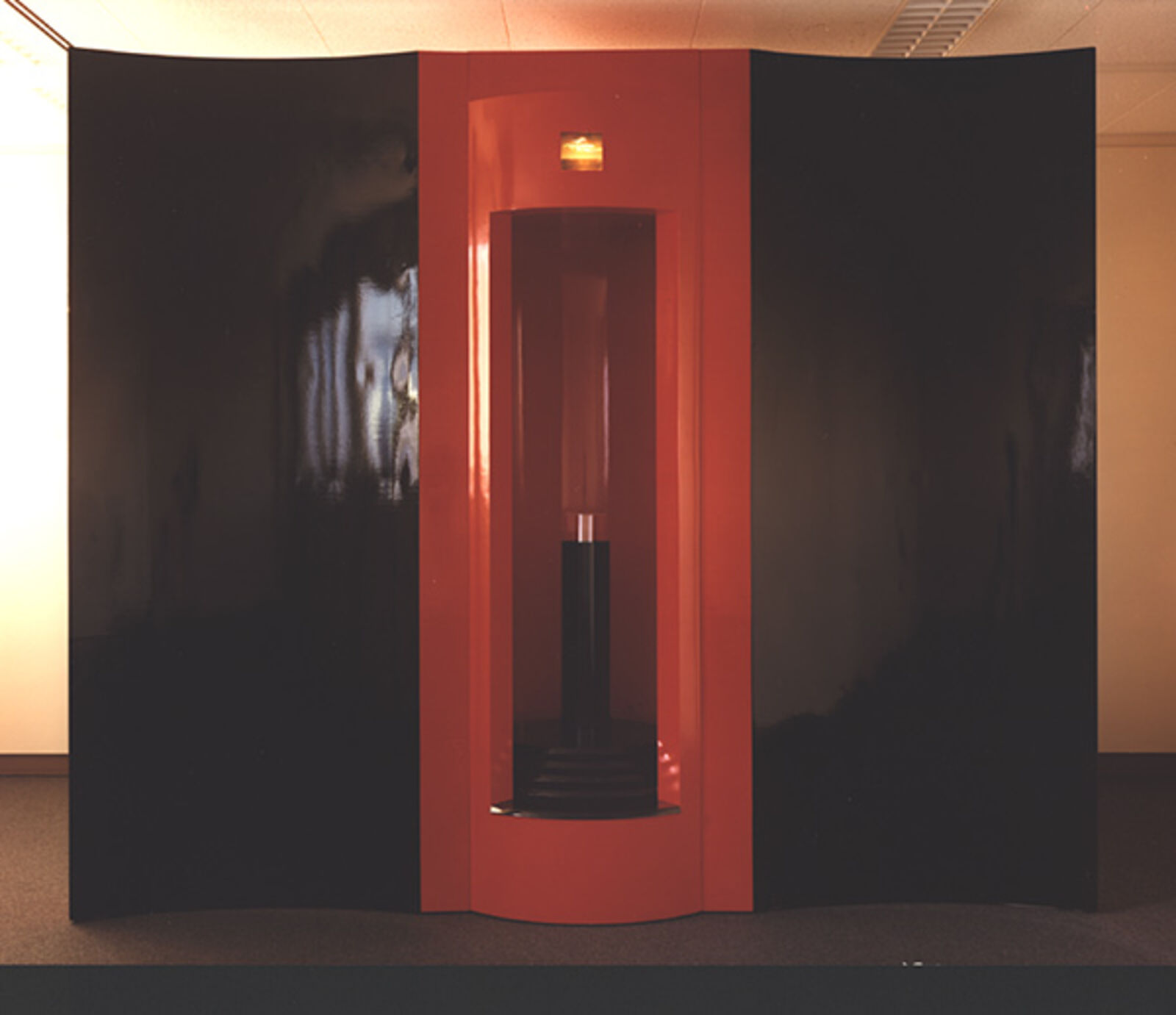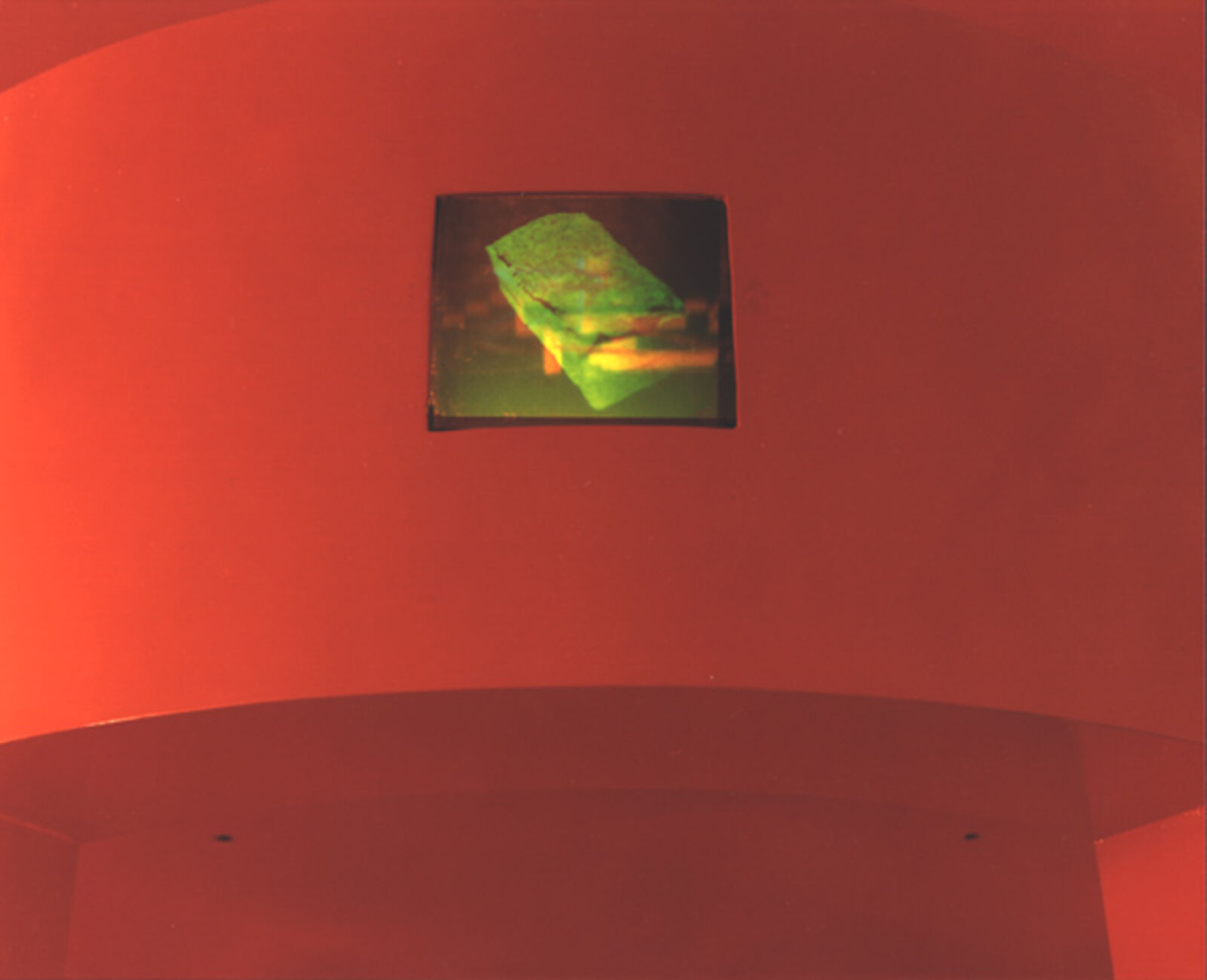Christiaan Bastiaans "The Nara Tape Factor"
11–28.10.1985
World Trade Center, Amsterdam
World Trade Center, Amsterdam

Introduction to the symposium by Christiaan Bastiaans
© Dennis Hogers / Rob Versluys, Amsterdam
© Dennis Hogers / Rob Versluys, Amsterdam

Viewing of the Shrine for Managers
© Dennis Hogers / Rob Versluys, Amsterdam
© Dennis Hogers / Rob Versluys, Amsterdam

Shrine for Managers
© Dennis Hogers / Rob Versluys, Amsterdam
© Dennis Hogers / Rob Versluys, Amsterdam

Presentation of the The Nara Tape Factor video, World Trade Center 'club'
© Dennis Hogers / Rob Versluys, Amsterdam
© Dennis Hogers / Rob Versluys, Amsterdam
Symposium: October 11, World Trade Center Amsterdam
Installation: October 11 through 28, World Trade Center Amsterdam, tower A, suite 909
‘In 1981, a mysterious discovery was made at an archaeological site near the ancient capital of Japan in the Nara region, in previous times the political center of Japan. The discovery consisted of a small stone box containing fragments of a tape-like material. The inside of the box bears still undecoded inscriptions. The mysterious discovery coincided with the visit of Pope John Paul II to Japan and the growing rumours in consequence connected and compared the Nara Tape discovery to the Turin Shroud, a relic which has always been crucial to the feeling of authenticity in the continuation of the Romanic Catholic faith. Could such relics also influence patterns in social behaviour? The Nara tape was discovered at a time when a sense of growing awareness for a change in society became prevalent in Japan. Many people therefore regard the mysterious Nara Tape and the still undecoded message on the Tape as possibly a clue for re-evaluation of human values. Under transformation is a modern Japan, an economic worldpower built on the ruins of Nagasaki and Hiroshima. A country that has survived the 1973 'Oil-shock', expanded and become a leader in the world for business-skills, managerial techniques and advanced information systems. Previous successful patterns and strategies, e.g. in business communications have become outmoded. Having global ramifications, the consequences of a contemporary ‘crisis’ in Japan have affected a matrix of values situated in political, social, religious and cultural spheres. Resulting in the occurrence of 'brand-new' tendencies of behaviour in Japan some refer to as the Nara Tape Factor. Heading for the 21st century, can we detect ways in which strategies for corporate structures are formulated, originating in traditions of centuries ago?’ (Christiaan Bastiaans, ‘The Nara Tape Factor’, De Appel, 5 (1985) 1, p. 9.)
‘The Nara Tape Factor, a project by Christiaan Bastiaans, was presented in Amsterdam's World Trade Center on 11 October 1985. On a big video screen, Bastiaans introduced The Nara Tape Factor and the importance of the Nara Tape's discovery in China. It was then exported to Japan and contains information about a new form of communication in management strategies The symposium's four speakers we re (successively) Dr. G. Raes from the University of Ghent and one of the researchers of the Turin Shroud, Dr. S.L. Kwee who gave a lecture about ‘Politics and strategy from the Chou Dynasty to the Nara Age’, Dr. J.A. Stam from the Erasmus University in Rotterdam who spoke about ‘Japan's modern management in a historical perspective’ and finally H.A.S. Velu who comes from the banking world and addressed the public on ‘Models of contemporary management in the West’. Two Japanese hostesses then lead us to Christiaan Bastiaans' installation and sculpture in which a part of the discovery, a fragment of the relic, was exhibited just like a viewing of St. Veronica’s Veil, one lined up in a long queue. Bastiaans gave each visitor ample opportunity to confront the valuable relic in the Shrine for Managers. Finally the videotape, The Nara Tape Factor, was shown in the World Trade Center's 'Club'.’ (De Appel, 5 (1985) 2, p. 28.)

